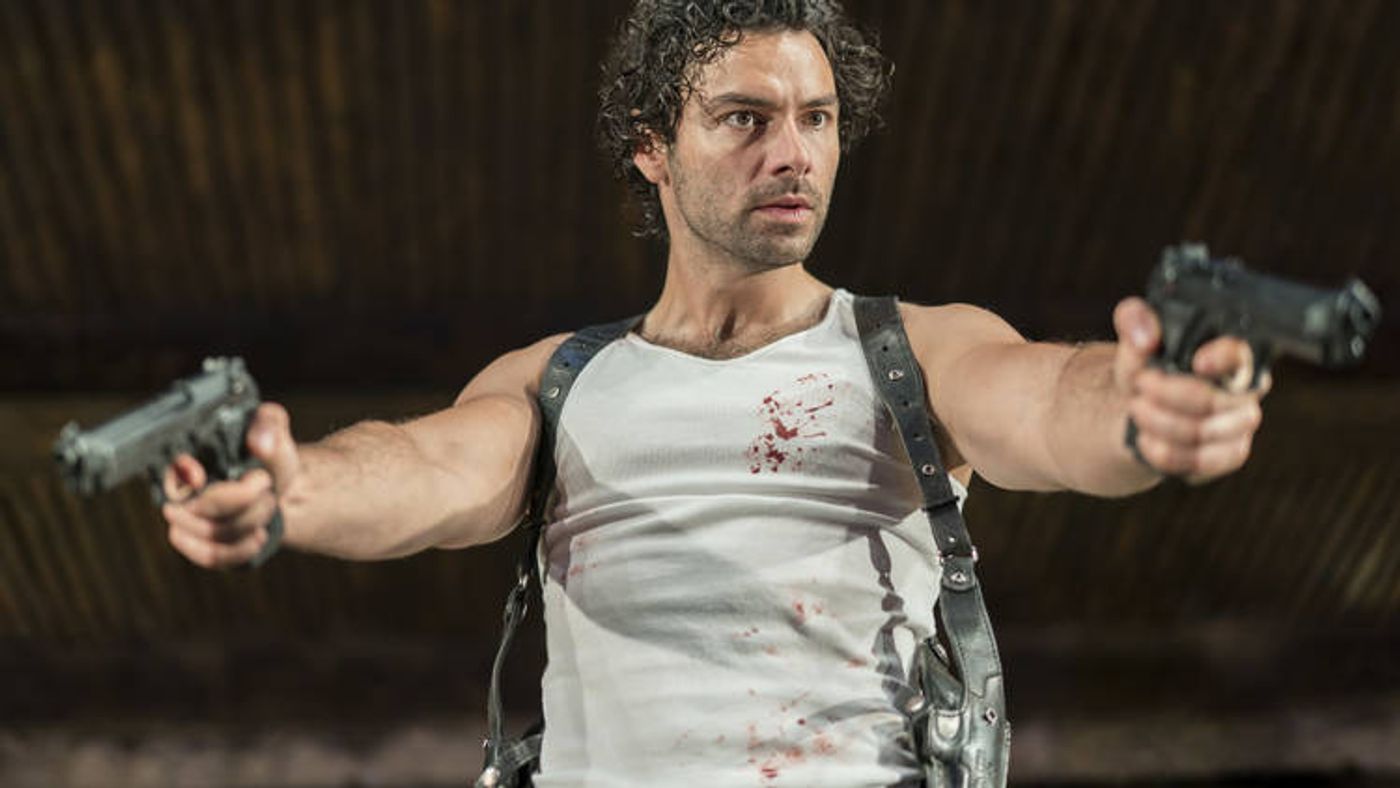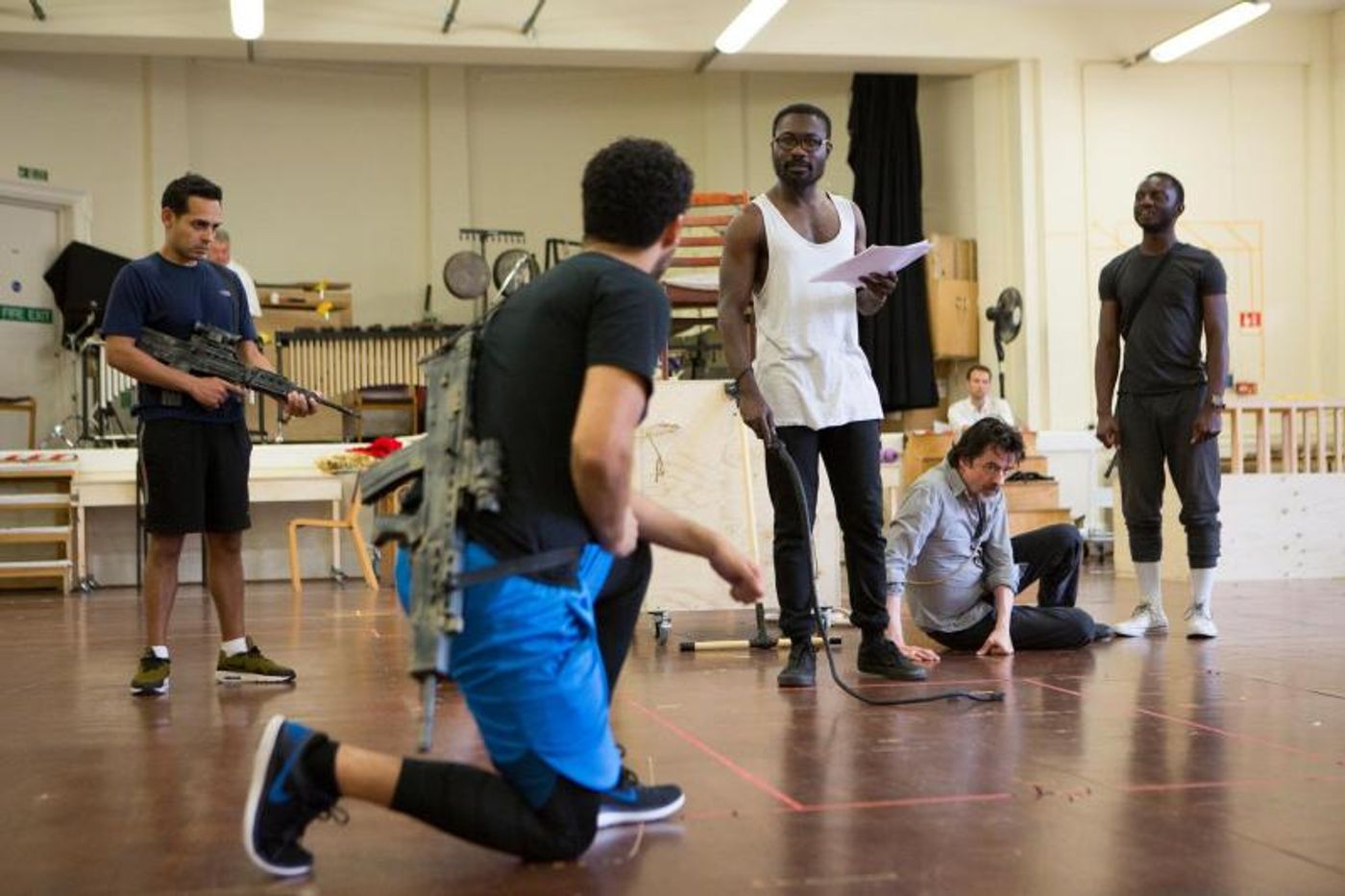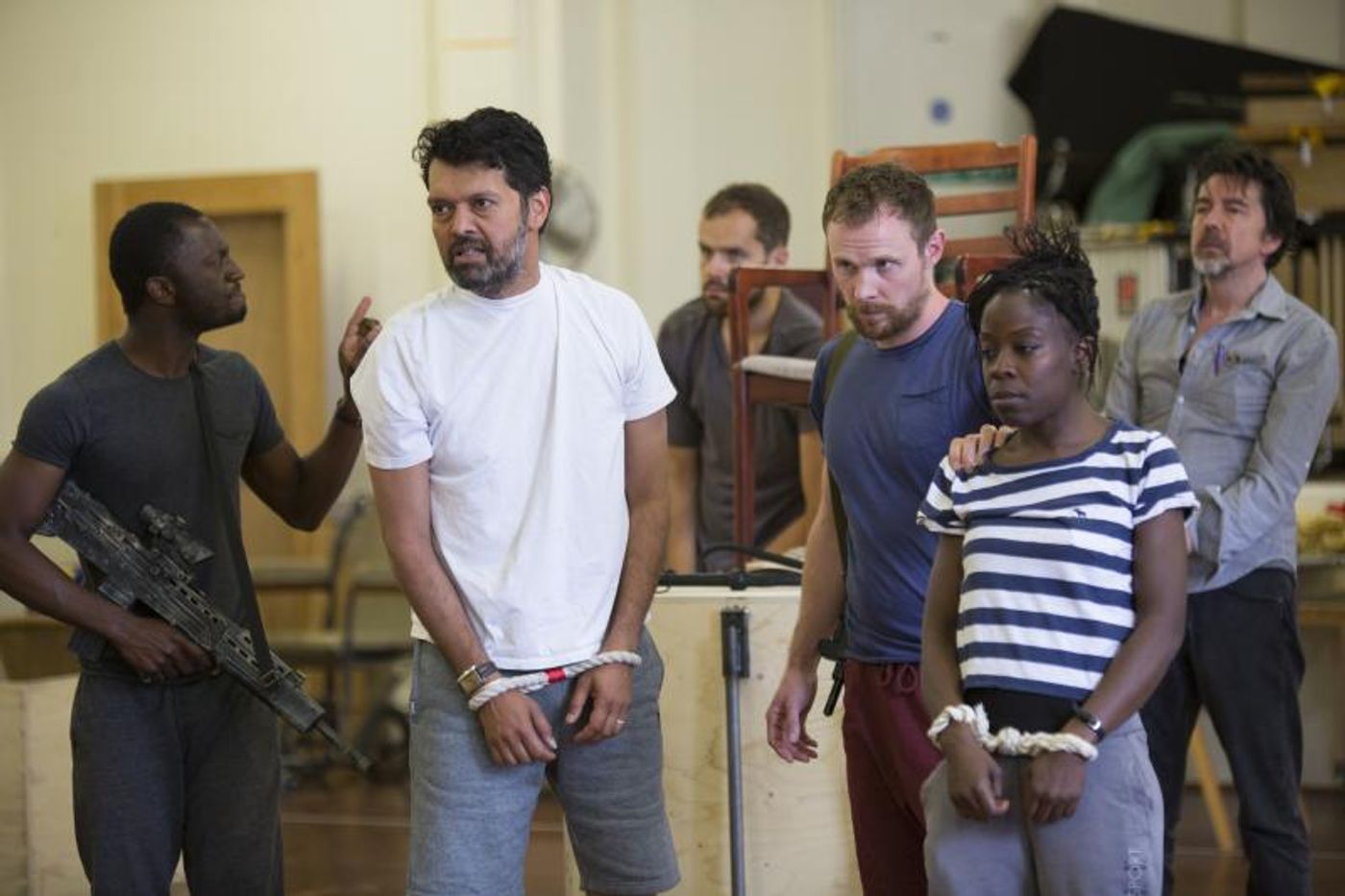Interview: Blood, Guts & More - Special Effects in Theatre
Ever wondered what goes into creating your favourite productions? Those moments of magic (or macabre) where you go, "How did they do that?!" In our new Special Effects series, we'll be discovering how the worlds on stage come to life by exploring the worlds off stage, talking to the creatives and crews from some of the UK's biggest shows and theatre companies.
This month, we're looking at stage blood and effects in two infamously bloody shows. We spoke to the Company Stage Manager on Michael Grandage's The Lieutenant of Inishmore Lorna Cobbold and the Designer of the Royal Shakespeare Company's Tamburlaine Tom Piper, who shared their practices (and a few secrets).

Lorna Cobbold is the Company Stage Manager of Grandage's production of The Lieutenant of Inishmore. This, however, isn't her first time working on the show...
Taking us backstage at the Noël Coward Theatre, Lorna is quick to give a warning: there will be blood (on stage and off!)
I'll make sure to watch my step!
Walking round back here, it's an occupational hazard: getting blood on you. Decapitated bodies and heads and tarp dripping, we've just gotten used to. At first, it's a little grim. But now it's, "Where's the ankle?"
And it tastes like candyfloss.
Oh!
Because of the glucose. We were thinking we might make our own, we got a recipe from America. There was so much sugar and Hershey syrup. It read like you were making a cake! I just thought, "We can't have that!"
Who makes the blood for you?
We have two blood suppliers: Pigs Might Fly who do a great thick one, and KlassicCool for more of the sloshing around.
During rehearsals there was a lot of research into what blood we wanted. So we were Googling odd things: blood colour, how it washes off, what sound does a bone make being sawn...
Deleting your internet history as you go!
Definitely! And then there's the cat brains. What do cat brains look like? You find yourself asking, "Does this consistency look good?" And going, "Oh no, I don't think cat brains would look like that". As if we had any idea what cat brains would look like!
So, what do cat brains look like?
A lot of things!
I actually worked on this production before at the RSC. So for the cat brains then, we used prunes and blood which we also used for the gunshot wounds. Here, our cat brains are jelly and blood! So it's about noise and texture, and you practice until you get it right.
.jpg?format=auto&width=1400)
and Denis Conway
in The Lieutenant of Inishmore
It must be weird revisiting a show, particularly one as gory as this.
Everybody says, "Why on earth are you doing it twice?!" But it's such a great bit of writing and it's so funny.
When we read it with Michael Grandage, the Director, we realised that it was rather tricky, "There's a haircut, there's cats, there's guns, there's blood, there's bodies". I mean, how many things can you throw at a play to try and solve, in a play that's an hour and a half long?
How did you go about solving that?
Michael was very conscious of exploring the technical aspects early on in rehearsals. So come tech, it's not a huge shock.
I think one of the ways we've solved something is quite exciting. We're not using blanks in our guns. Most show weapons expel blanks, which create problems: they go everywhere and can sometimes misfire.
So in rehearsals, we started asking questions about what we wanted to see with the guns. Then Mark Shelly our Armourer would advise us "It's this sort of gun: this would be the impact and force", then Kate Waters our Fight Director would show the actors how to physicalize this.
We wanted to make it tense and exciting with sound effects, acting and anything else we could to make it look real.
Can you share some of the effects you use, to heighten the realism?
It's all in the details.
So although we're not firing anything, we actually have dust that gets thrown up. So when you first see Padraic (Aidan Turner) shooting at the floor, dust is expelled. It gives you a sense that something's happening.
I think there's a heightened sense of reality in theatre anyway.

The Lieutenant of Inishmore
How do you create the larger blood effects, like blood spatter?
Well...I'm not sure I'm going to tell you!
Aw!
But I will share how we did it last time.
You have a white cottage and you need blood to get up a wall in the direction that a gunshot has happened. So the actors held ketchup bottles full of blood and prunes. And as they died, they squeezed it behind them up the wall.
So it can be that simple and effective. Ours is more technical and SAS North helped us to achieve a bit more. So we still propel blood up walls to achieve that spatter, just in a different way.
So with performances underway, can you take us through your role on the night as CSM?
Once we get clearance, I'm backstage and tell the team we're ready to go. I then hand over to the DSM who calls the show, and is essentially the captain of the ship and runs it.
I do cues, scene changes and striking bits off the stage (in my wellies and boiler suit!)
How did you get involved in this field?
I did a Drama degree and had a tutor called Michael Holt, Alan Ayckbourn's Designer. I wanted to be a Designer and he very kindly said, "You'll never be a Designer". And he was so right! And he suggested Stage Management.
In those days, SM did a lot of the propping, so it was very creative. My training was in rep at Southampton, learning on the job. My first chance was as a trainee at the Royal Court in Joe Penhall's first play, which was hugely exciting.
So I was an ASM for a long time, because I loved being on the deck. I was a terrible DSM though, I didn't do much of that! Then I became a CSM and loved it, being on stage and working with the actors.

in The Lieutenant of Inishmore
What are the biggest challenges of working with blood?
It gets everywhere!
We have to mop the stage relentlessly. It takes 30 minutes to clear up at the end and the crew come in the next morning and give it another go. There are myths about the Garrick, where the RSC production was: if you go sub-stage, there's still blood dripping...but I don't believe that!
So we spend a lot of time just trying to keep the blood contained. Fortunately, we have the blood kitchen.
The blood kitchen...?
For any other show, the kitchen's probably full of food props. For ours, it's full of blood and mops!
As soon as you walk offstage, you've got blood all over you. So we have a decontamination area, where the actors take off their bloody stuff, put on dressing gowns and head into the shower.
So the blood gets backstage. Is there a blood spatter zone in the audience?
No, fortunately you're always safe!
(Although people did get hit with blood in the RSC's... there were quite large dry-cleaning bills sometimes!)
Finally, how much blood do you think you'll get through in total?
We use four and a half litres each show, do eight shows a week. So from May - September, that's almost 650 litres!

While the audience may be safe in London, the same can't be said for those in Stratford. The RSC's The Duchess of Malfi this summer gave their audiences protective blankets to shield them from blood spray! And it's no wonder: over 3,000 litres of blood were used throughout the run.
"Blood will have blood" and as one bloody production ends, another begins. Talking to the Designer of Tamburlaine Tom Piper during rehearsals, he revealed when and how he prefers to use blood effectively.
What inspired you to pursue theatre design?
I started doing it at university and I enjoyed the hands on, practical, problem-solving element of it. And also the free creativity, that was a major change from the Biology degree that I was doing. I think that's what seduced me: that great mixture of practicality and use of one's imagination.
What's been the bloodiest production you've worked on?
Probably the History Cycle here at the Royal Shakespeare Company. That covered the War of the Roses with eight productions in one environment, with many battles and brutal murders so it was pretty bloody!
But I always think you have to be careful how you use blood. If you do use too much, it can become comic in the wrong sort of way.
What are some of the challenges of working with blood, in that respect?
Certain naturalistic effects in the theatre are difficult to achieve live, so creating actual wounds or bullet holes where suddenly an actor's shirt gets a magic hole in it and blood pours out. These effects never work in theatre, as they become too detailed and filmic and need a camera close up to work.
So actually sometimes using blood in a more abstract way is more visceral and more poetic.

Tamburlaine
Can you share some of the effects you will be utilising this time on Tamburlaine? Because you've previously worked on it with Michael Boyd.
We did a version in America and there was a Blood Specialist and a Special Effects guy who used very expensive pumping systems. This time, I'm hoping in a more RSC, sophisticated-but-low-tech-way, we won't need so many pressure pumps and can be clever with garden pressure pumps and gravity!
There's a moment where Tamburlaine cuts his arm, and we are going to pour a thin stream of blood from the flys [rigging] above, and he'll just hold his arm out into the blood which will splash over it. I work closely with the RSC technical team to find the right solution for each problem.
I imagine from your extensive career with the RSC, you've given them a lot of challenges!
Ha, definitely! Another effect, which we tried before in the History Cycle when the future Richard III murdered Henry VI, was to use a garden pressure pump below the stage. There was this little hole in the stage and a tube down to the pump.
You can fill that up with blood and when Henry died on top of it a big slick developed from under his body...as long as the actor died in the right place!
Fingers crossed!
Yes, it's a bit embarrassing if they miss it and there's suddenly a load of blood coming from a toe!
But it's a great effect. You think, "Oh, it's just a blood bag". But then this pool of blood develops. And quite often, we kind of create a secondary abstract image on top of the first more naturalistic death.

Jude Owusu, James Clyde and
Anton Cross in Tamburlaine
Is that something you're planning on using here too?
Yes. In one scene, Tamburlaine and his wife Zenocrate walk through a massacre with bodies lying in pools of blood and she's wearing this long dress which trails through it. The blood seeps up into her dress.
So you get the sense that she too is implicated in this death and is stained by it. And that raises an interesting modern day question: are we all culpable or implicated in the rise of a tyrant?
How would you describe the overall vision of the piece?
In an abstract sense, it's a bit like an abattoir. There's a cement floor with grills (which could be easily washed down), there's plastic sheeting which people come through and it creates layers within the space.
There's a particularly brutal moment in Tamburlaine's massacre of the virgins in Damascus. The actors are standing behind the plastic and buckets of blood are thrown over them and blood flows down the plastic. So it's weeping blood.
And again, we have second image created when the blood pipes are then washed through with water, and you almost get the sense of it raining. Raining blood, then raining tears almost.
What blood are you using?
Well we work with Pigs Might Fly...and there are trade secrets to its content! But there's definitely high sugar content and red dye, and we have a choice about how much we dilute it.
Sometimes with the blood running down the plastic, we'll want that to be quite diluted so it does genuinely flow. Other times, we create very sticky blood so that if you have a blood bag or something hidden in a set, you can just scoop your fingers in it and use that to smear a wound on your face and it sticks.

Ralph Davies, Edmund Wiseman,
Debbie Korley and James Clyde
in Tamburlaine
I can imagine that can stick to clothes too. What do you have to consider practically when working with blood and costumes?
It does mean you need to make or buy at least three of everything, and you've got enough time to wash things and dry things between shows.
Let's take Zenocrate's costume, which we're dragging through the blood. Before we bought the fabric, we bought a sample and tested it with the Costume Team to make sure a) the blood washes out, and b) will the blood be absorbed into it.
Other costumes need hidden pockets lined with plastic to hide blood bags in.
What's your role in rehearsals, and making that vision come together?
Well most of my work at the moment is with the costumes and working on the journey for the actors through the piece. Because lots of them play a whole series of characters who are continually trying to thwart Tamburlaine. It's almost like they are reborn as the same person, the costumes follow a particular shared silhouette or colour scheme.
That's what's great about working with Michael. We're very implicit that it's the same actor, so you get that emotional journey: "I've just seen you being killed by Tamburlaine or killing yourself to escape Tamburlaine. What are you going to do next?"
The Lieutenant of Inishmore at Noël Coward Theatre until 8 September
Tamburlaine at Swan Theatre, Stratford Upon Avon, 16 August - 1 December
Photo credit: Johan Persson (The Lieutenant of Inishmore), Ellie Kurttz (Tamburlaine)
Powered by
|
Videos

